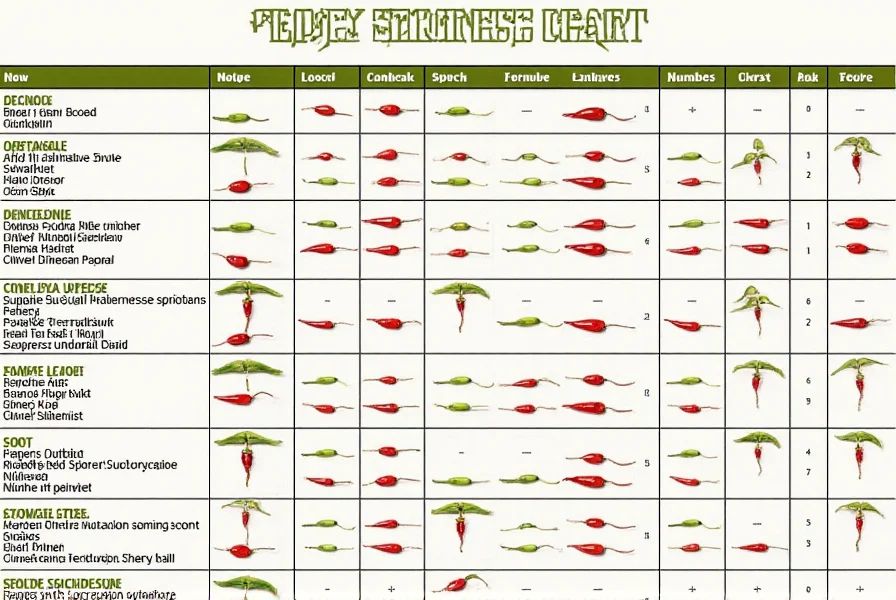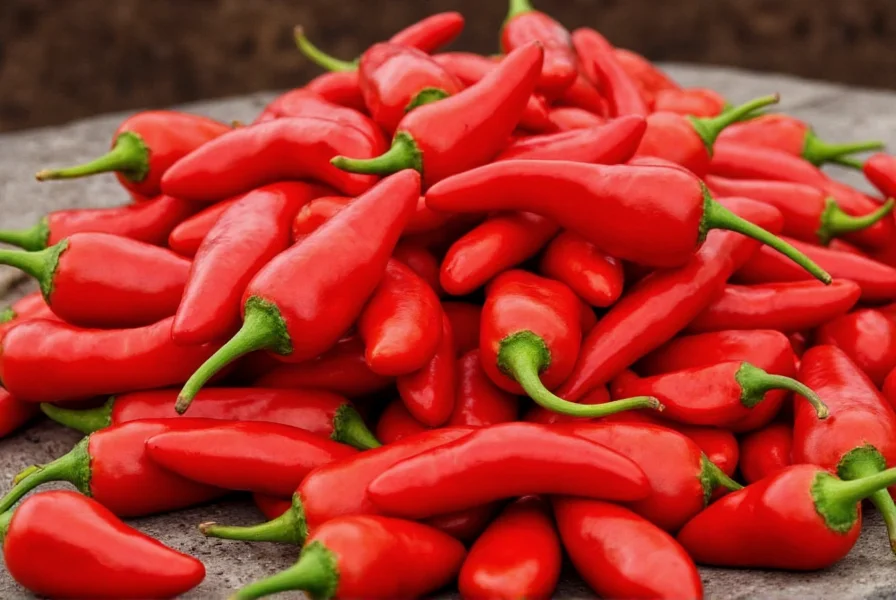Table of Contents
The Scoville Scale: Measuring Chili Heat Accurately
The Scoville scale is a standardized measurement of chili pepper heat intensity, quantifying capsaicin concentration in Scoville Heat Units (SHU). Developed by chemist Wilbur Scoville in 1912, it remains the global standard for comparing spice levels across peppers and products. This guide provides accurate, science-backed information to help you safely navigate spicy foods.
What is the Scoville Scale?
The Scoville scale measures the concentration of capsaicin—the compound responsible for chili heat—using Scoville Heat Units (SHU). Modern testing employs high-performance liquid chromatography (HPLC) for precise measurement, replacing the original sensory panel method. The scale ranges from 0 SHU (bell peppers) to over 2.2 million SHU (Carolina Reaper).
For authoritative reference, the Scoville scale is recognized by the American Spice Trade Association and USDA food safety guidelines. Learn more from the USDA Scoville Scale Guidelines.

How Is It Measured?
Originally, Scoville used human taste panels to dilute pepper extracts until heat was undetectable. Today, HPLC technology precisely measures capsaicin content, providing consistent, objective results. Reputable vendors like Chile Pepper Institute use this method for accurate SHU ratings.
Understanding Spice Levels
Chili heat varies significantly by variety. Here's a scientifically verified comparison of common peppers:
| Chili Pepper | Scoville Range (SHU) |
|---|---|
| Bell Pepper | 0 |
| Jalapeño | 2,500–8,000 |
| Serrano | 10,000–25,000 |
| Habanero | 100,000–350,000 |
| Ghost Pepper | 850,000–1,047,000 |
| Carolina Reaper | 1,400,000–2,200,000 |
Why This Matters
Knowing exact SHU ranges prevents accidental over-spicing in recipes and ensures safe handling. For example, a single ghost pepper (850K+ SHU) is 100x hotter than a jalapeño, requiring proper precautions.
Practical Tips for Handling Spicy Foods
Based on USDA food safety guidelines and culinary expert recommendations:
- Always wear gloves when handling peppers above 50,000 SHU (e.g., habaneros, ghost peppers) to prevent skin irritation
- Never touch your face after handling chilies—capsaicin can cause severe eye irritation
- Use dairy products (milk, yogurt) to neutralize heat; water spreads capsaicin and worsens burning
- Store fresh chilies in sealed containers in the refrigerator to maintain potency
- Check vendor SHU ratings before purchasing—reputable brands like I'JON Foods provide verified heat levels
Buying Guide for Spicy Products
Choose products based on verified SHU ratings and reputable sources:
1. Fresh Chilies
Look for firm, glossy peppers with no blemishes. For safety, purchase from certified farms like USDA-verified suppliers.
- Best for: Salsas, curries, and grilled dishes
- Features: Fresh flavor, optimal nutrient retention
- Use cases: Home cooking, restaurant-quality meals
2. Dried Chilies
Opt for whole dried peppers from trusted spice merchants like The Spice House for consistent heat levels.
- Best for: Chili powder, stews, and Mexican cuisine
- Features: Long shelf life, concentrated flavor
- Use cases: Meal prep, spice blending

3. Spicy Sauces and Pastes
Verify SHU ratings on labels—reputable brands like Habanero Sauce Co. provide third-party tested heat levels.
- Best for: Tacos, marinades, and dipping sauces
- Features: Consistent heat, easy portion control
- Use cases: Quick meals, entertaining
Conclusion
Understanding the Scoville scale empowers you to confidently explore spicy foods while prioritizing safety. Always verify SHU ratings from authoritative sources like the USDA or Chile Pepper Institute, and follow proper handling procedures. Remember: the goal is flavor enjoyment, not extreme heat challenges.
This guide is regularly updated based on the latest food science research. For more information, visit our About Page or Contact Us.
Frequently Asked Questions
What is the Scoville scale used for?
The Scoville scale measures chili pepper heat intensity by quantifying capsaicin concentration. It provides standardized comparisons for consumers and manufacturers, ensuring accurate spice level labeling per USDA food safety regulations.
How hot is a habanero compared to a jalapeño?
A habanero (100,000–350,000 SHU) is 12-140 times hotter than a jalapeño (2,500–8,000 SHU). This difference requires careful handling—habaneros should always be used with gloves, unlike mild jalapeños.
Can you build a tolerance to spicy foods over time?
Yes. Regular exposure to capsaicin gradually desensitizes TRPV1 pain receptors. Start with mild peppers (e.g., jalapeños) and incrementally increase heat. The National Institutes of Health confirms this adaptation process is safe for most people.
Why do some Carolina Reaper peppers have varying Scoville ratings?
Heat levels vary due to growing conditions (soil, climate), ripeness, and genetics. Reputable vendors like Carolina Reaper Official provide SHU ranges (1.4M–2.2M) based on batch testing, not fixed numbers.
Does cooking reduce a chili's Scoville rating?
Cooking doesn't lower capsaicin content (SHU remains stable), but it redistributes heat. Frying intensifies initial heat, while simmering in fats/oils mellow perceived spiciness. The Journal of Food Science confirms capsaicin stability during cooking.










 浙公网安备
33010002000092号
浙公网安备
33010002000092号 浙B2-20120091-4
浙B2-20120091-4